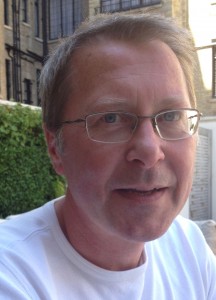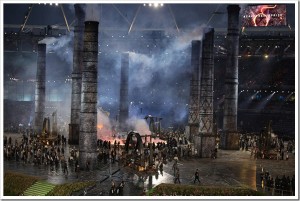In the moments between watching and re-watching the Olympic Opening Ceremony in the past 48 hours, I’ve been reading [amazon_link id=”0956766242″ target=”_blank” ]No Straight Lines: Making Sense of Our Non-Linear World[/amazon_link] by Alan Moore.
[amazon_image id=”0956766242″ link=”true” target=”_blank” size=”medium” ]No Straight Lines: Making Sense of Our Non-linear World[/amazon_image]
I met Alan earlier in the week to talk about the book, which is about redesigning business models taking into account both the dramatic effects of digital technologies and the multiple crises – financial, environmental, social – crashing over western economies at present. It seemed quite an apt choice of reading material, having seen Danny Boyle’s brilliant vision of a Britain socially and culturally shaped by our responses to successive technologies. This moment in time really does feel like a turning point in our collective approach to the organisation of the economy and society.

Alan Moore
Alan’s perspective as someone who has worked with many businesses over the years provides interesting examples of successful change to work on the basis of more (financially, socially, environmentally) sustainable principles, such as Yeo Valley Organic. He also looks at sectors where businesses are not adjusting well, from banking and big pharma to local newspapers. I like the way the book ranges across a huge territory, for as well as all these areas of business it also discusses health care and education. In short, it takes a systems approach, or general equilibrium as we might describe it in economics. Moore presents the current array of economic and social problems as a kind of design challenge, where what is being redesigned is the organisation of society as a whole. Insanely ambitious, but I rather like that.
His final chapter distils the lessons into six principles: be participatory; focus on craftsmanship (echoes of Richard Sennett’s [amazon_link id=”0141022094″ target=”_blank” ]The Craftsman[/amazon_link], cited here); be adaptive (Tim Harford’s [amazon_link id=”0349121516″ target=”_blank” ]Adapt[/amazon_link]); learn to live with ambiguity and uncertainty; be open, and therefore resilient; have vision.
In sum: “Imagine the impossible, then create it.” Our hero Danny Boyle would agree.

Olympics opening ceremony (photo credit: Shimelle, creative commons)
